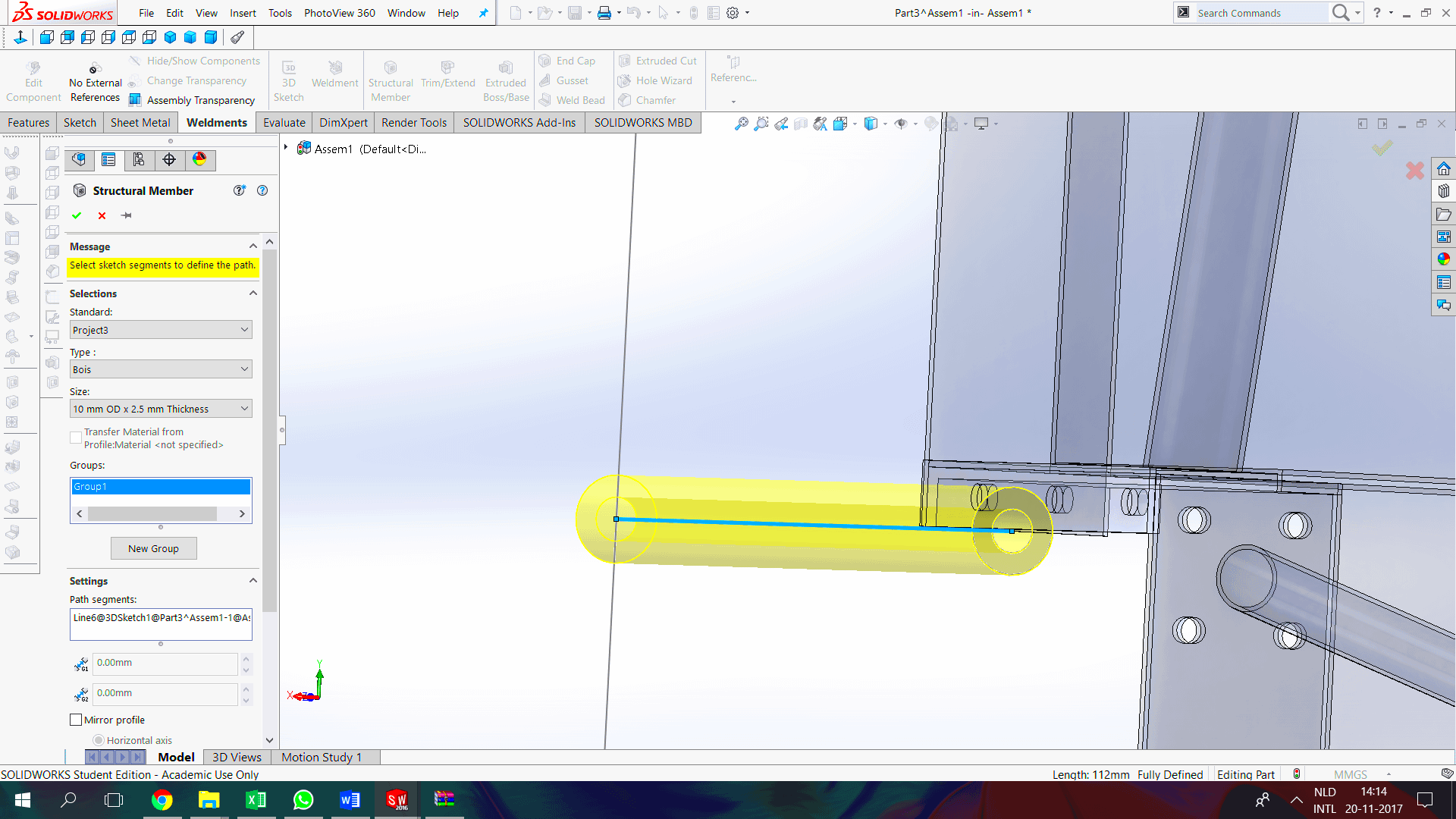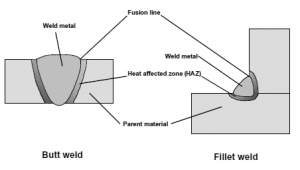Welding offset lines can bring an extra layer of detail and clarity to your images. Whether you’re working with technical illustrations, product photos, or industrial designs, adding these lines can highlight the structure and depth of the subject. It's a technique commonly used in CAD designs and visual presentations, where precision and clear boundaries are important. In this post, we will delve into how welding offset lines are added to images, the benefits of using them, and how to use tools like Picfair Downloader for a smooth process. Let's get started!
What Are Welding Offset Lines?

Welding offset lines are essentially lines that are added to an image to represent a specific offset or gap, typically used in welding and technical drawings. These lines are not a part of the image's original design but are added to provide a more structured, defined view. They’re most commonly used in industrial, architectural, and technical fields to represent weld seams, edges, or boundaries between materials. In simple terms, they’re lines that shift from the original shape to create a visual offset, which can help in better understanding and highlighting key elements of an
- Offset lines are usually drawn at a fixed distance from the edge of an object or image.
- Purpose is to highlight separations or seams, particularly in technical visuals like blueprints or CAD drawings.
- Application often includes welding designs, machine part drawings, and other engineering visuals.
Also Read This: Exploring the Number of Channel IDs Available on Storyblocks for YouTube Content
Why Use Welding Offset Lines in Images?
Welding offset lines serve several purposes that enhance the clarity and precision of images, especially when you need to represent something technical or highly detailed. These lines make complex visuals easier to understand by creating clear separations and depth. Here are a few reasons why they are used:
- Enhanced clarity: Offset lines can make the distinction between different parts of an image clearer, helping the viewer understand the structure.
- Improved precision: When dealing with technical drawings, precision is key. Welding offset lines give a visual representation of measurements and gaps.
- Better alignment: They help in aligning parts or components in industrial, architectural, and engineering designs.
- Visual appeal: In some cases, they also add an artistic touch, making images look more dynamic and well-structured.
By using welding offset lines, you can ensure that your images carry both visual appeal and technical accuracy. Whether you’re an engineer, a designer, or someone working with detailed graphics, this technique is a valuable tool to enhance your work.
Also Read This: How Do You Print Pictures from Pinterest? Follow These Steps
How to Add Welding Offset Lines Using Picfair Downloader
Adding welding offset lines to your images is easy and efficient with Picfair Downloader. This tool simplifies the process of editing your images by allowing you to apply adjustments like welding offset lines without needing complex software. Below is a simple guide to get you started:
- Step 1: Upload your Image – Begin by uploading the image you want to edit. Use the "Upload" feature in Picfair Downloader to select your image from your computer or device.
- Step 2: Choose Editing Tools – Once your image is uploaded, navigate to the editing section. Here, you will find various tools to manipulate the image. Select the option for adding lines or marks.
- Step 3: Apply Offset Lines – With the drawing tool selected, draw the welding offset lines over the desired areas of the image. You can adjust the distance, thickness, and position of these lines to match the specifics of your project.
- Step 4: Adjust the Lines – After adding the lines, you can further refine them by adjusting the opacity, color, or style. This ensures the offset lines complement the existing image and create the desired effect.
- Step 5: Save and Download – Once satisfied with the result, click on the "Save" button and download your edited image. Now, your image has welding offset lines ready for use in any technical or industrial visual project.
Picfair Downloader offers a simple, user-friendly interface that makes adding welding offset lines straightforward. With just a few clicks, you can enhance your images without needing advanced technical skills.
Also Read This: Reducing TIFF Image File Size Efficiently
Tools Required for Welding Offset Lines
When working with welding offset lines, you don’t need a wide variety of tools. However, having the right ones can make the process smoother and more efficient. Below are the essential tools you'll need:
- Image Editing Software – This is the primary tool for adding welding offset lines. Programs like Picfair Downloader, Adobe Illustrator, or CAD software offer features for drawing lines, adjusting positions, and customizing the appearance of the offset lines.
- Drawing Tools – These are the built-in tools within the software that allow you to manually draw the offset lines. You’ll need a pen tool or line-drawing tool to create precise lines.
- Measurement Tools – To make sure your offset lines are correctly placed, using a ruler or measurement tool within your software can help you maintain consistent spacing and accuracy.
- Computer or Tablet – A reliable device is necessary to run your editing software and make the adjustments needed. Whether you’re using a computer or tablet, ensure that your system supports the software of your choice.
- File Format Support – Ensure that the software you're using supports the image formats you want to work with, such as JPEG, PNG, or TIFF, to avoid compatibility issues when adding lines.
These tools, combined with a good understanding of how to manipulate them, will allow you to effectively add welding offset lines to any image. With the right equipment, you can enhance the detail and clarity of your visuals without hassle.
Also Read This: Sizing Images for Sublimation Tumblers: A Quick Guide
Best Practices for Adding Welding Offset Lines
When it comes to adding welding offset lines to images, there are a few best practices to ensure that your images look professional and meet the required standards. Below are some tips to help you achieve the best results:
- Be Precise – The placement of the welding offset lines should be exact. Use the measurement tools in your software to make sure the lines are consistently placed at the right distance from the edges or other features of the image.
- Choose the Right Line Style – The style and thickness of the lines should match the image’s purpose. For technical and industrial visuals, choose a line style that’s clear and easy to see without overpowering the image. For artistic projects, you may want to opt for a thinner, more subtle line.
- Maintain Consistency – If you are adding multiple offset lines to a single image, make sure they are all aligned and spaced uniformly. Consistency in line placement will help your image appear professional and organized.
- Use Contrasting Colors – If the image background is dark, use a light color for the offset lines, and vice versa. A good contrast ensures the lines are visible and clear, improving the overall readability of the image.
- Test Your Lines – Once the offset lines are applied, step back and view the image from a distance. This will help you assess whether the lines enhance the image or distract from the main focus. If needed, make adjustments to the opacity, color, or positioning.
- Check for Alignment – Use alignment tools in your software to make sure the welding offset lines are properly aligned with other elements in the image, such as edges or corners.
Following these best practices will help you add welding offset lines in a way that enhances the image’s detail while maintaining its clarity and purpose. With these tips, you’ll be able to produce high-quality visuals that are both professional and effective.
Also Read This: Flattening Images in Photoshop with Shortcuts
Common Challenges and How to Overcome Them
While adding welding offset lines to images can greatly enhance their visual appeal and precision, there are some challenges that may arise during the process. Understanding these common issues and knowing how to handle them can make your workflow much smoother. Below are some typical challenges you may face when adding welding offset lines, along with solutions to help you overcome them:
- Challenge 1: Incorrect Line Placement – One of the most common issues is placing the welding offset lines incorrectly. This can happen if measurements aren’t precise or if the lines overlap key areas of the image.
- Solution: Use measurement tools and guides in your editing software to ensure precise placement. Always double-check distances between lines and objects before finalizing.
- Challenge 2: Visibility Issues – Sometimes, the welding offset lines may not stand out enough against the background or other elements in the image.
- Solution: Adjust the color and thickness of the lines for better contrast. Use a lighter or darker color based on the background, and ensure the lines are thick enough to be visible but not overwhelming.
- Challenge 3: Misalignment of Lines – Another challenge is ensuring the welding offset lines are perfectly aligned with the object’s edges or boundaries.
- Solution: Many editing tools, including Picfair Downloader, offer alignment tools. Use these to make sure your lines are straight and aligned properly with the design.
- Challenge 4: Complex Software Features – Some software programs may have complex interfaces, making it difficult for beginners to navigate through the tools needed to add welding offset lines.
- Solution: Take some time to familiarize yourself with the software’s tools and shortcuts. Most tools offer tutorials or documentation to guide you through the process. Picfair Downloader, for example, is user-friendly, with intuitive features designed to simplify the process.
By being aware of these challenges and applying the suggested solutions, you can ensure that your welding offset lines are added smoothly and effectively to your images.
Also Read This: How to Rotate Images in Google Drive
FAQ: Welding Offset Lines to Images
Below are some frequently asked questions (FAQs) about adding welding offset lines to images, along with their answers to help clear up any confusion:
- Q1: What exactly are welding offset lines?
A: Welding offset lines are lines drawn at a specific distance from an object or image boundary, typically used in industrial and technical drawings to represent weld seams or to create a visual separation between different parts of the image.
- Q2: Can I add welding offset lines to any type of image?
A: Yes, welding offset lines can be added to various types of images, especially those related to technical designs, CAD drawings, and industrial illustrations. However, they are most useful in images that require precision and clear separations, such as blueprints or product designs.
- Q3: How do I ensure my welding offset lines are perfectly aligned?
A: To ensure proper alignment, use the alignment tools in your image editing software. These tools will help you position your lines consistently along the edges of your image, making sure they are evenly spaced and parallel.
- Q4: Do I need special software to add welding offset lines?
A: You don’t need highly complex software. Simple tools like Picfair Downloader or Adobe Illustrator are enough for adding welding offset lines. Choose the software that fits your needs and skill level.
- Q5: How can I make my welding offset lines more visible in dark images?
A: If your image has a dark background, choose a lighter color for the offset lines. You can also adjust the line thickness to make them stand out more. Ensuring a good contrast will improve visibility.
Conclusion
Adding welding offset lines to your images is a powerful way to improve their clarity, precision, and overall visual appeal. Whether you're working on technical drawings, product designs, or any other type of image that requires structure and detail, welding offset lines can be the key to enhancing your visuals. With the right tools, such as Picfair Downloader, and a few helpful tips and tricks, you can easily incorporate these lines into your images to achieve professional results. Keep in mind the common challenges and how to overcome them, and always strive for precision and consistency to get the best possible outcome.
Now that you know how to use welding offset lines effectively, you’re ready to start adding them to your images and elevating your designs!

 admin
admin








